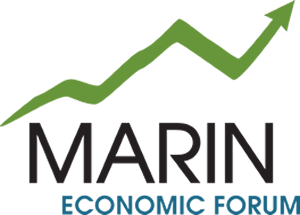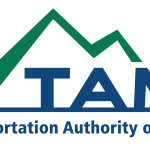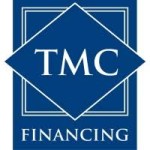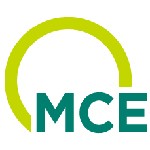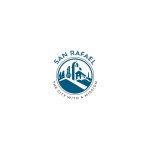Marin County’s economy will return, but so will its challenges
COVID’s impacts to businesses are well known. The slowing of the economy due to shutdowns caused great financial stress and the need to adapt business models. The future is unknown with the rise of remote work and uncertainty on how consumers will spend or travel in a post-COVID environment.
Here in Marin, the future may not be so opaque.
Our economy is largely oriented towards serving the local market. As we reopen and people get vaccinated, we anticipate demand to mostly return without major changes, though we do not know how long that will take.
That sentiment prompted me to revisit a major project MEF was implementing in late 2019/early 2020, which was disrupted by the pandemic, but not before a major phase of the project was complete.
The “Marin County Business Retention & Expansion Project” was designed by MEF and funded by the County of Marin. The project’s objective was to identify the challenges and opportunities for businesses to grow and then initiate programs in the county to address those challenges.
Following dozens of interviews, surveys and economic analysis by MEF, a report sharing the findings was published in March, just days before the COVID-19 crisis went into full effect.
Now about a year later, it seemed an appropriate time to compare the challenges and opportunities businesses had pre vs. post COVID-19 and to see what has changed.
The number one priority/challenge for Marin businesses in 2019/20 was hiring.
At the time, Marin County’s unemployment rate hovered between 2.5- 2.9%, representing close to “full employment” in economic terms (when everyone who wants a job has a job). The hiring challenge was most acute at the lower skilled occupations, such as restaurant workers and retail store merchants, but also in some of the higher skilled jobs like architects and software engineers.
MEF concluded our resident workforce was not aligned to job demand, but that wasn’t simply an issue of lack of housing, often blamed for our lack of workforce.
In fact, for as diverse as the Marin economy is, with 20+ sectors contributing to our Gross Regional Product, the economy is also quite “shallow,” meaning not enough companies in those sectors to attract a large enough workforce to ensure a pipeline of workers.
For example, software engineers are not abundant in Marin because there are few local employers and not everyone wants a commute.
Let’s contrast the hiring challenge with the current situation. As of this writing, unemployment in Marin County stood at 5%, almost double pre-COVID-19 levels, but lowest in the state of California. That is down from a high of over 11% in April 2020.
According to a recent business survey (1,200 respondents), almost 50% of businesses have remained in business with the same number of staff compared to 16% that reduced staff.
Another 6% have increased staff while 8% plan to downsize operations. So, some growth, mostly status quo, and some decrease.
However, as Marin County moves into less restrictive tiers and businesses open at greater capacity, there is an expectation that demand for goods and services will spike (also the narrative at the national level). This fact, along with historical consumption patterns in Marin suggests our businesses will soon find themselves in the situation of competing for employees, especially in the services sector.
The next biggest challenge was securing sales and customers, which could be understood more generally as “competition.”
Among the project sector focus group meetings, the retail sector cited sales equally with hiring. Already under pressure from online retailers, Marin’s retail sector had been integrating “experiential” retail formats as well as new delivery options while successfully catering to the community’s desire to shop local and “shop small.”
One hardware store was expanding despite the presence of Home Depot, Lowes, and Costco.
It would be an understatement to say that during COVID-19 consumers shifted a major portion of purchasing to online; online retail sales increased by 44% in 2020.
This consumption was not limited to durable goods as services including exercise, training, banking, and entertainment made a significant “digital shift” over the past year.
Certainly Marin businesses were able to adapt to an online format and participate in the shift. Going forward, businesses will continue to be concerned about their ability to secure customers, especially those with brick-and-mortar operations that depend on a physical visit to make a sale.
The third concern was “transportation” and very specifically last-mile transportation that would allow employees or customers to reach final destinations without the use of a private vehicle (Uber and Lyft notwithstanding).
Pre-pandemic, MEF was already sharing this information with the Transportation Authority of Marin, who had in place ride-share programs and was preparing to launch a bike-share pilot. As we mostly know, public transportation almost ceased completely, dropping 87% in the Bay Area in the early pandemic days.
How quickly demand returns and how routing can accommodate the needs of employees and employers remains a bigger unknown then how Marin was going to address the last-mile issue in the first place.
Finally, businesses were concerned pre-pandemic with their ability to secure sufficient commercial real estate for their business operations, given a relatively small office footprint in Marin, especially of the coveted “class A” properties that typically house professional services firms.
Contrary to many other areas of the country, which have experienced a flight from commercial space, the Marin market did not experience a “dip” in lease prices due to the pandemic.
Further, new designs for large commercials spaces in Northgate and Novato have trended towards mixed-use, accommodating much needed housing. Just as before, businesses seeking growth in Marin County could be faced with limitations.
Comparing the challenges and priorities of Marin businesses pre and post COVID shows very little difference, which can be both positive and negative.
On the one hand, despite a major, once-in-a lifetime economic shock our economy is mostly on a path to recovery.
On the other, returning to the status quo will present old problems, which were already difficult to deal with and have not been changed due to the pandemic (such as how other cities are reimagining commercial real estate footprints and streetscapes or preparing for a remote work economy.)
Now more than ever, dealing with the challenges our businesses face needs to be a priority-not just because we want recovery but because we have deeper competitiveness issues that need addressing if we want a resilient economy in the future.
Be the first to receive updates and news from MEF by subscribing or liking us on our social media pages: Facebook, Twitter, and LinkedIn!
